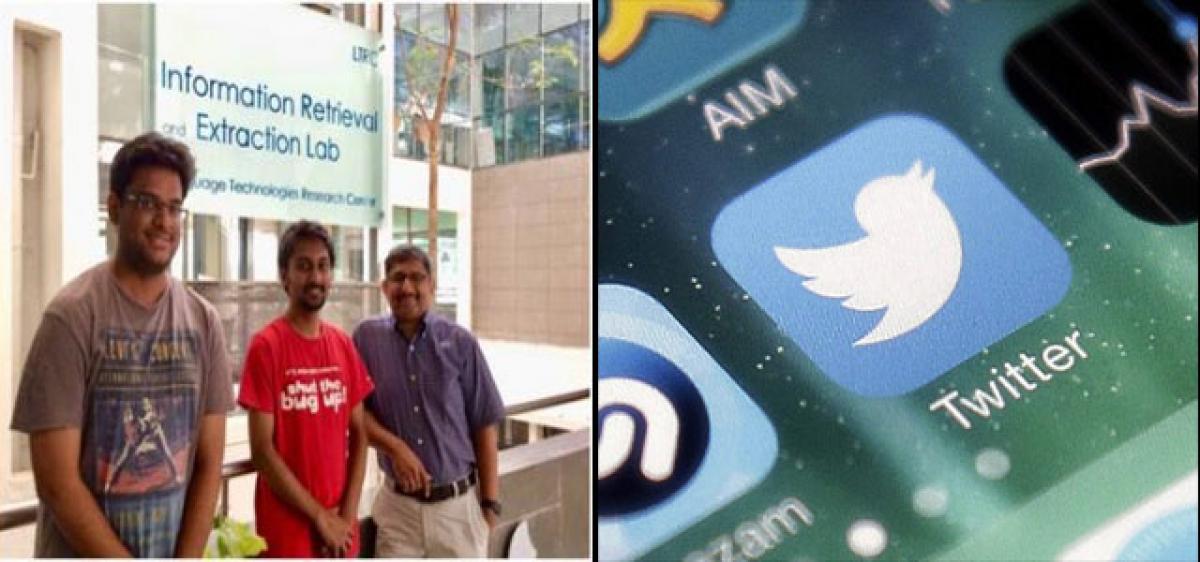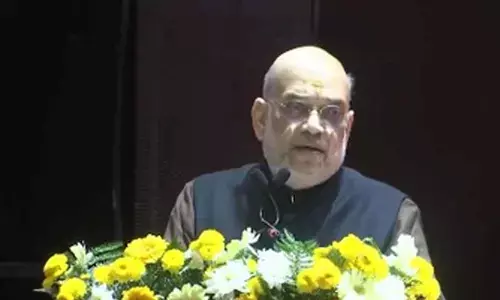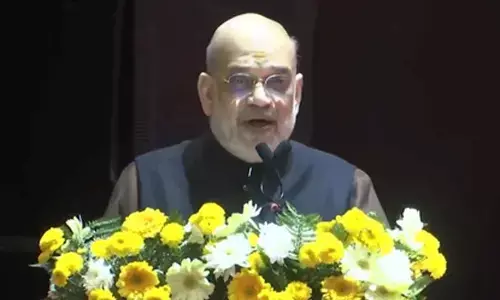IIIT-H develops hate speech detector in Tweets

Pinkesh Badjatiya, Shashank Gupta and adjunct faculty Manish Gupta under the guidance of Vasudeva Varma, Professor and Dean (R & D) at IIIT-Hyderabad’s Informational and Retrieval Extraction Lab (IREL) has developed a new screening mechanism for identifying hate speech in twitter.
Microblogging sites have become very famous in recent days and Twitter is one of the most used microblogging site around the world. Unfortunately most of the people experience hate speech on this platform. IIIT-Hyderabad has come up with a new development using Artificial Intelligence chatter-bots that can detect hate speech in tweets
Hyderabad: Pinkesh Badjatiya, Shashank Gupta and adjunct faculty Manish Gupta under the guidance of Vasudeva Varma, Professor and Dean (R & D) at IIIT-Hyderabad’s Informational and Retrieval Extraction Lab (IREL) has developed a new screening mechanism for identifying hate speech in twitter.
They have developed the screening mechanism by applying natural language processing and semantics to develop an automated system using Artificial Intelligence chatter-bots that can detect hate speech in tweets.
As of now they are able to detect abusive language, sexist and racist speech and flag offence content. This is especially useful in not only automatically filtering such content, but also analysing public sentiment to get to the root of the problem through user generated content.
It’s a few words restricted to 160 characters, but the reach and impact of a single tweet goes way beyond. With 313 million monthly active users, and 1 billion unique monthly visits to sites with embedded tweets in over 40 languages, its influence is phenomenal to say the least.
True to the micro blogging site’s mission ‘to give everyone the power to create and share ideas and information instantly, without barriers’, Twitter is being constructively used in law enforcement, education, emergencies, politics, business, entertainment and even to gauge public opinion.
To detect hate speech, they use a popular approach in machine learning called supervised learning. Essentially a computer algorithm is fed many examples of text from each form of hate, which can be categorised as ‘racist’ or ‘sexist’ tweets.
The algorithm is designed in such a way that it ‘learns’ as it sees the data, and after the algorithm terminates, the program is smart enough to recognize racism or sexism in text, if it sees one. The algorithm uses neural networks, more popularly called as deep learning. These algorithms are inspired from the human brain, and they try to simulate how humans learn from examples.
But given the laissez faire nature of the medium, and its effect on impressionable minds, there’s the potential danger of it being misused, misconstrued and even worse, creating communal animosity.
This line of research is highly relevant in the current wave of social media, but has its unique challenges and complexities. For example, how does natural language processing decipher the various forms of hatred, identify the targets of such hatred and deconstruct the double entrendes of a language.
Vasudeva Varma, Professor and Dean (R & D) at IIIT-Hyderabad, his students Pinkesh Badjatiya, Shashank Gupta and adjunct faculty Manish Gupta worked on this topic for close to a year and presented it at WWW2017 Perth earlier this month, where their poster on Deep Learning for Hate Speech Detection in Twitter was voted as the best poster presentation among 166 submissions from around the world.
The International World Wide Web Conference is an annual forum that brings together some of the most influential members of the web community. With a 20-year history, it’s the world’s longest-running and most prestigious web conference. IIIT-Hyderabad has been successfully publishing its research papers at WWW since 2007.
Professor Vasudeva Varma says, “This is a very prestigious conference since many of the policies regarding the Internet are formulated here. And it’s very well attended by academia and research wings of large companies like Facebook, Google, and Microsoft etc.
Also the fact that we’ve been able to make it through the rigorous review process to have our poster presentation voted as the best is a great validation of our research work”.

















